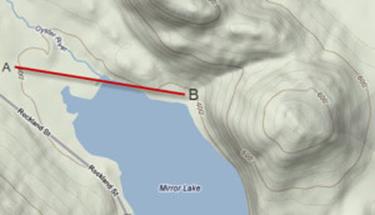Planning your emergency meals sets apart a manageable crisis from an outright disaster. Although many of us have our 72-hour bags packed and ready to go, take a second look at your pack to ensure that the food you plan on taking will realistically sustain you during that 3 day ordeal.
In a bug out situation, put thought into the situation you could find yourself in. You will be in a high stress environment where you may be on foot walking for long periods, or for that matter walking up and down hills. The foods we will carry will make all the difference in the world in terms of maintaining energy levels, and nutrition. Many preppers underestimate how much food they will need for their 72 hour bags. They believe that living off of survival bars for a main source of nutrition for 3 days will give you the optimum nutrition. This just isn’t so.
When you are preparing your bug out bag, you want your diet to give you ample calories, carbohydrates, protein, vitamins and some fats. Keep in mind that ages and genders will play a role in calorie consumption. As mentioned, you will be operating in a high stress and high energy environment, therefore your body needs to be running as efficiently as possible. With this in mind, you should plan to eat small meals every 2-3 hours.
Create a Menu
The best approach to ensuring you have enough food for 72-hours is to sit down and create an emergency menu based on your family’s preferences and map out the nutrition needs that the chosen foods provide. This will help you stay organized for the disaster and will also help you create a shopping list for bug out supplies. Your menu should be realistic in the sense that it will provide your body with the necessary energy needs.
The Nutrition Breakdown
In your bug out bag, make sure that the foods you store for this short lived emergency will have the sustaining energy sources that will burn slowly. Finding foods that are high in complex carbs and dietary fiber are more efficient from a dietary standpoint and will keep you feeling “fuller” longer.
Some energy efficient food sources to consider are:
- Fruits/Vegetables – Obviously, having these dehydrated will lighten the load and give you something nutritious to snack on. Keep in mind that dehydrated foods can last for 12 months or longer, provided they have been stored properly. Pack fruits and vegetables that are the most calorie dense. Look for small boxes of dried fruits for easy meal assembly.
- Whole vs. White – We all know that whole grains are better for you. But did you know that they keep you fuller longer. Also, whole grain breads with seeds and nuts can provide added nutrition. Look for whole grain pancake mixes, crackers, pastas and bread to get good sources of whole grains.
- Nuts – This food source is one of the most nutrient dense foods and is also full of fiber to help you stay full longer. Due to the high protein count of these lightweight nutrition powerhouses, can be an efficient meat replacement. Look for non-salted nut varieties to keep you hydrated longer.
- Meat Source – Protein sources are imperative during an emergency and can also cut down on stress. The amino acid in meat, specifically Tryptophan, binds to protein and becomes a precursor for the neurotransmitter serotonin. Increased levels of serotonin may help you cope with stress. Freeze dried meats or TVP (textured vegetable protein), dehydrated meats or canned meats of beef, chicken or tuna would be good choices to add to your pack.
According to the FDA, for a normal adult’s 2,000 calorie meal plan, 45 to 65 percent of your daily calories should come from carbohydrates, 20 to 35 percent of your calories should come from fats, and 10 to 35 percent of your daily calories should come from proteins. This chart can help in researching caloric needs based on gender and ages. Keep this in mind and adjust your dietary intake accordingly to maintain proper energy requirements.
Below is a list of suggested meals a person could carry in their bug out bag. This is not meant to be comprehensive but a guide to show what types of foods you should consider for your diet. These foods are light weight, easy to prepare and will provide essential calories and energy.
Day 1
Breakfast – 2 cups oatmeal with raisins and 1 cup reconstituted dry milk powder
(calories: 568, fat: 8 g, carbs: 108 g, protein: 28 g)
Snack: 2 bars Datrex 3600 survival bar (you can make your own but only about 2000 calories)
(calories: 400, fat:, 17.4 g, carbs: 49.4 g, protein: 5.6 g)
Lunch – Chicken flavored Ramen noodles with dehydrated vegetables
(calories: 246.7, fat: 4.7 g, carbs: 27.3 g, protein: 9.3 g)
Snack – 1 package of whole grain crackers and peanut butter with dried apples
(calories: 310, fat: 9 g, carbs: 23 g, protein: 5 g)
Dinner – 2.5 cups chicken and rice a roni casserole, rehydrated
(calories: 545.8, fat: 9.2 g, carbs: 75 g, protein: 40.8 g)
Total Daily Nutrition of Day 1:
calories: 2,070.5, fat: 48.3 g, carbs: 282.7 g, protein: 88.7 g
Day 2
Breakfast – 1 cup dry raisin bran cereal with reconstituted dry milk powder and 1 ounce of walnuts
(calories: 390, fat: 11 g, carbs: 66 g, protein: 14 g)
Snack – 8 graham crackers with 4 tbsp peanut butter and 1 box of raisins
(calories: 646, fat: 35.2 g, carbs: 69.6 g, protein: 19 g)
Lunch – 1 pouch of StarKist Chunk Light Sandwich Ready Tuna Salad, 15 Kashi wheat crackers
(calories: 230, fat: 6 g, carbs: 26 g, protein: 16 g)
Snack – Luna fiber bar and Carnation Instant Breakfast drink
(calories: 440, fat: 10 g, carbs: 67 g, protein: 23 g)
Dinner – Dehydrated bean chili and cornbread , reconstituted and and 2 soft oatmeal cookies
(calories: 605, fat: 64 g, carbs: 106.8 g, protein: 15 g)
Total nutrition of Day 2:
calories: 2311, fat: 126.2 g, carbs: 335.4 g, protein: 87 g
Day 3
Breakfast – “Just add water” whole wheat pancakes, 1/4 cup of dried blueberries, 2 maple syrup packets, hot chocolate with reconstituted dry milk powder
(calories: 506.7, fat: 3.7 g, carbs: 113.2 g, protein: 11.7g)
Snack – 1 ounce walnuts, dried apples and 8 graham crackers
(calories: 400, fat: 13 g, carbs: 36 g, protein: 4 g)
Lunch – 1 pouch of StarKist Chunk Light Sandwich Ready Tuna Salad, 15 Kashi wheat crackers
(calories: 230, fat: 6 g, carbs: 26 g, protein: 16 g)
Snack: 2 soft oatmeal cookies and Carnation Instant Breakfast drink
(calories: 560, fat: 10 g, carbs: 66 g, protein: 16 g
Dinner – Canned Stew and 14 Kashi crackers
(calories: 370, fat: 14.5 g, carbs: 44 g, protein: 18 g)
Total nutrition of Day 3:
calories: 2,470, fat: 47.2 g, carbs: 285.2 g, protein: 65.7 g
Don’t Forget These Considerations
Bear in mind that beverages are not listed and adding powdered drink mixes or vitamin powders to water, will increase your calories and some daily nutritional content. Above all, you must have water and/or a means to filter it as many of the meals will require some sort of water for preparation.
Did you know that a staggering thirteen vitamins are considered necessary to perform crucial functions in the body? Ensure your body is getting an adequate amount of vitamins through your food source or play it safe and pack a few multivitamins in your pack.
Another point to consider is to make sure the meals you pack are realistic and can carry you through 72 hour period. Practice or run a 72 hour drill to see how long you can last on your bug out rations. After all, you want to feel confident in the preps you have.
Although your main priority is to keep the weight of your 72 hour bag down, you want to have a way to prepare meals. This can be as simple as having a folding stove, a camping stove or if you plan on cooking over a fire, a way to light the fire.
To conclude, the best way to prepare for a disaster is to plan for it. Research the nutritional aspects of the foods you want to pack and get a list together of what items you need. Once you do this, make a point to put them in or near by your bug out bag. The only way you will feel confident in a bug out situation is to know that you have all you need to survive.
Start now to make sure you are staying prepared.
Via: readynutrition
 Follow
Follow



































